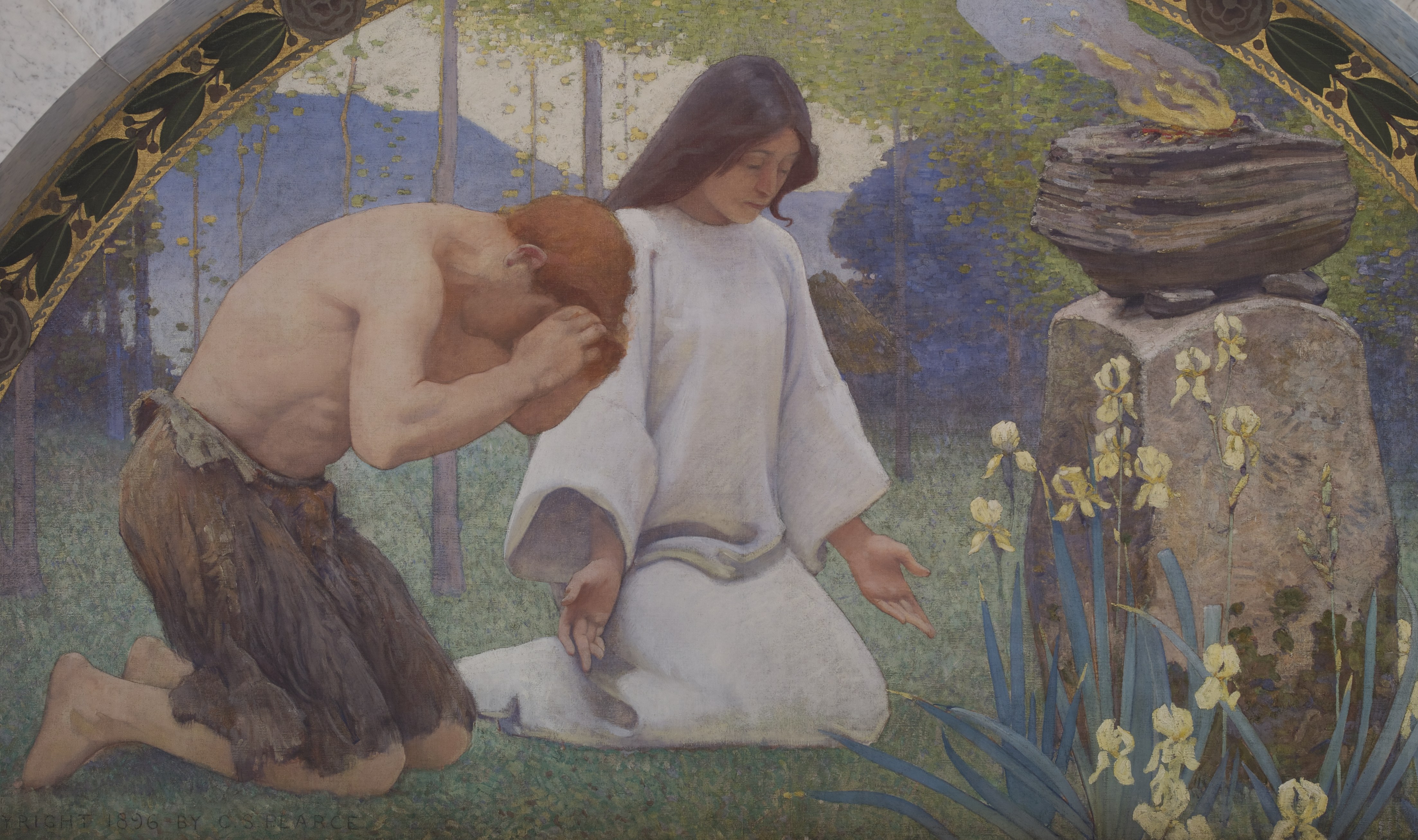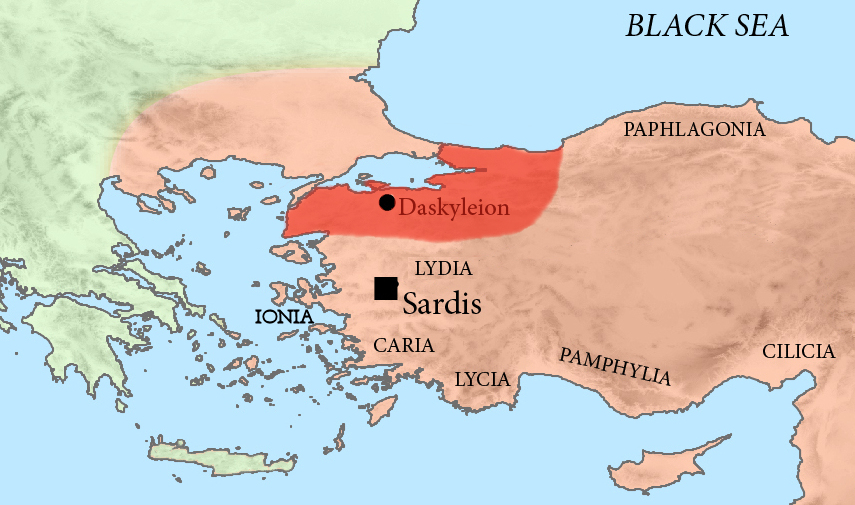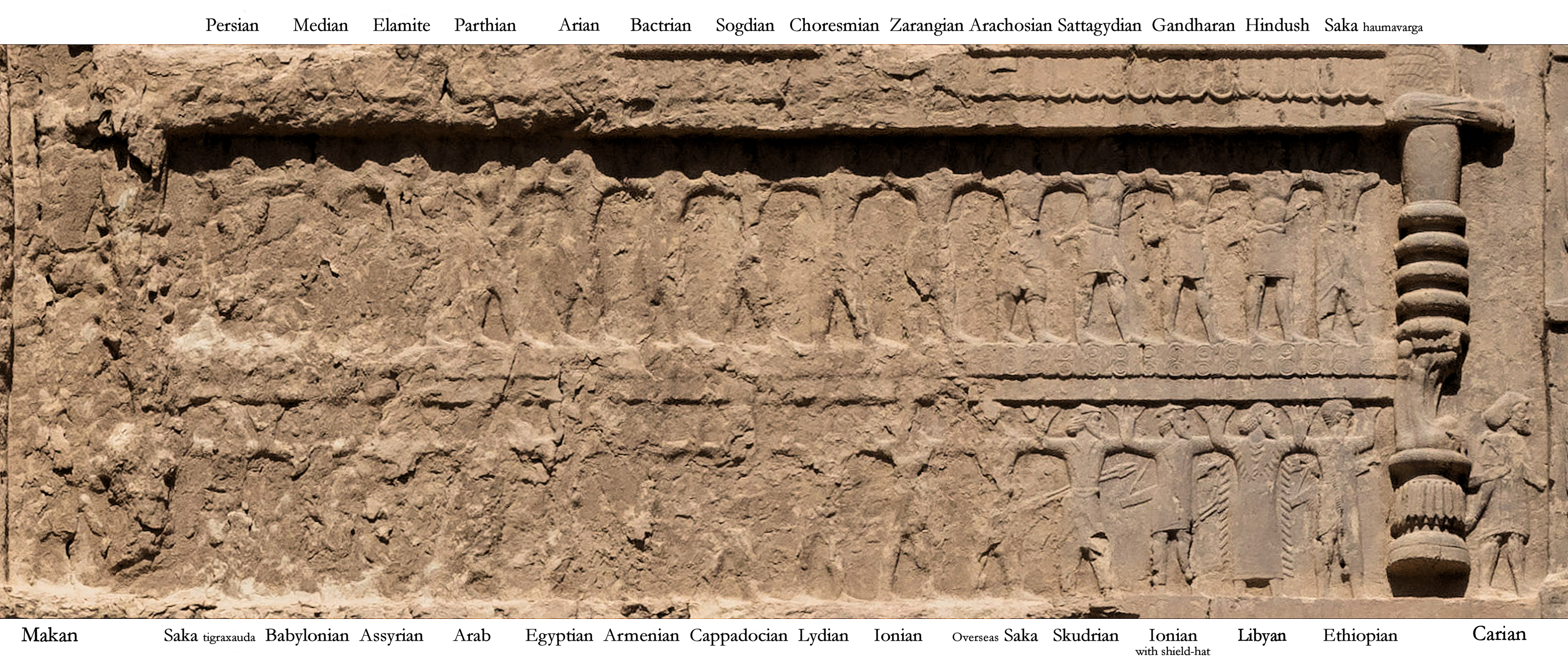|
Theogenes
There are at least three extant uses of the name "Theagenes" ( grc-gre, Θεογένης) referenced in the literature of ancient Greece in surviving literature which appear to describe different persons. These are listed in the sections below. Theagenes the Boxer from Thasos Theagenes was one of the greatest athletes in Ancient Greece. He was born in the city of Thasos on the island of the same name in the Aegean Sea in the early fifth century. He was a boxer and a pankrationiast. He had two victories at the Olympic Games. One was in boxing (480 BCE) and the other in the pankration (476). He won three times in boxing at the Pythian Games; nine times in boxing and once in the pankration at the Isthmian Games; and nine times in boxing at the Nemean Games. He also won the long distance race at Argos. He had 1300 other victories in lesser Games. It is certain that Theogenes was worshipped as a god in Thasos after his death. One of his enemies whipped his statue. It fell and c ... [...More Info...] [...Related Items...] OR: [Wikipedia] [Google] [Baidu] |
Thirty Tyrants
The Thirty Tyrants ( grc, οἱ τριάκοντα τύραννοι, ''hoi triákonta týrannoi'') were a pro-Spartan oligarchy installed in Athens after its defeat in the Peloponnesian War in 404 BC. Upon Lysander's request, the Thirty were elected as a tyrannical government, not just as a legislative committee. Although they maintained power for only a brief eight months, their reign resulted in the killing of 5% of the Athenian population, the confiscation of citizens' property and the exile of other democratic supporters. They became known as the "Thirty Tyrants" because of their cruel and oppressive tactics. The two leading members were Critias and Theramenes. The rule of the Thirty With Spartan support, the Thirty established an interim government in Athens. The Thirty were concerned with the revision if not erasure of democratic laws inscribed on the wall next to the Stoa Basileios. Consequently, the Thirty reduced the rights of Athenian citizens in order to institute an ... [...More Info...] [...Related Items...] OR: [Wikipedia] [Google] [Baidu] |
Pankration
Pankration (; el, παγκράτιον) was a sporting event introduced into the Greek Olympic Games in 648 BC, which was an empty-hand submission sport with few rules. The athletes used boxing and wrestling techniques but also others, such as kicking, holds, joint-locks, and chokes on the ground, making it similar to modern mixed martial arts. The term comes from the Greek , meaning 'all of power', from (''pan'') 'all' and (''kratos'') 'strength, might, power'. History In Greek mythology, it was said that the heroes Heracles and Theseus invented pankration as a result of using both wrestling and boxing in their confrontations with opponents. Theseus was said to have used pankration to defeat the Minotaur in the Labyrinth. Heracles too was often depicted in ancient artworks subduing the Nemean lion using pankration. In this context, pankration was also referred to as ''pammachon'' or ''pammachion'' (πάμμαχον or παμμάχιον), meaning "total combat," from π ... [...More Info...] [...Related Items...] OR: [Wikipedia] [Google] [Baidu] |
Worship
Worship is an act of religious devotion usually directed towards a deity. It may involve one or more of activities such as veneration, adoration, praise, and praying. For many, worship is not about an emotion, it is more about a recognition of a God or gods. An act of worship may be performed individually, in an informal or formal group, or by a designated leader. Such acts may involve honoring. Etymology The word is derived from the Old English weorþscipe, meaning ''to venerate "worship, honour shown to an object'',Bosworth and Toller, Anglo-Saxon Dictionary,weorþscipe which has been etymologised as "''worthiness'' or ''worth-ship"''—to give, at its simplest, worth to something. Worship in various religions Buddhism Worship in Buddhism may take innumerable forms given the doctrine of skillful means. Worship is evident in Buddhism in such forms as: guru yoga, mandala, thanka, yantra yoga, the discipline of the fighting monks of Shaolin, panchamrita, mantra recitati ... [...More Info...] [...Related Items...] OR: [Wikipedia] [Google] [Baidu] |
5th-century BC Greek People
The 5th century is the time period from 401 ( CDI) through 500 ( D) ''Anno Domini'' (AD) or Common Era (CE) in the Julian calendar. The 5th century is noted for being a period of migration and political instability throughout Eurasia. It saw the collapse of the Western Roman Empire, which came to an end in 476 AD. This empire had been ruled by a succession of weak emperors, with the real political might being increasingly concentrated among military leaders. Internal instability allowed a Visigoth army to reach and ransack Rome in 410. Some recovery took place during the following decades, but the Western Empire received another serious blow when a second foreign group, the Vandals, occupied Carthage, capital of an extremely important province in Africa. Attempts to retake the province were interrupted by the invasion of the Huns under Attila. After Attila's defeat, both Eastern and Western empires joined forces for a final assault on Vandal North Africa, but this campaign was ... [...More Info...] [...Related Items...] OR: [Wikipedia] [Google] [Baidu] |
Ancient Athenians
Athens is one of the oldest named cities in the world, having been continuously inhabited for perhaps 5,000 years. Situated in southern Europe, Athens became the leading city of Ancient Greece in the first millennium BC, and its cultural achievements during the 5th century BC laid the foundations of Western civilization. During the early Middle Ages, the city experienced a decline, then recovered under the later Byzantine Empire and was relatively prosperous during the period of the Crusades (12th and 13th centuries), benefiting from Italian trade. Following a period of sharp decline under the rule of the Ottoman Empire, Athens in the 19th century as the capital of the independent and self-governing Greek state. Name The name of Athens, connected to the name of its patron goddess Athena, originates from an earlier Pre-Greek language. The origin myth explaining how Athens acquired this name through the legendary contest between Poseidon and Athena was described by Herodotus,Hero ... [...More Info...] [...Related Items...] OR: [Wikipedia] [Google] [Baidu] |
Pharnabazus (5th Century BC)
Pharnabazus II (Old Iranian: ''Farnabāzu'', grc-gre, Φαρνάβαζος ; ruled 413-374 BC) was a Persian soldier and statesman, and Satrap of Hellespontine Phrygia. He was the son of Pharnaces II of Phrygia and grandson of Pharnabazus I, and great-grandson of Artabazus I. He and his male ancestors, forming the Pharnacid dynasty, had governed the satrapy of Hellespontine Phrygia from its headquarters at Dascylium since 478 BC. He married Apama, daughter of Artaxerxes II of Persia, and their son Artabazus also became a satrap of Phrygia. According to some accounts, his granddaughter Barsine may have become Alexander the Great's concubine. According to research by Theodor Nöldeke, he was descended from Otanes, one of the associates of Darius in the murder of Smerdis. Satrap of Hellespontine Phrygia War with Sparta against Athens (c.413-404 BC) Athens was the dominant power in the Aegean in the 5th century BC, following the Greeks' victories over the Achaemenids in ... [...More Info...] [...Related Items...] OR: [Wikipedia] [Google] [Baidu] |
Darius Nothus
Darius II ( peo, 𐎭𐎠𐎼𐎹𐎺𐎢𐏁 ; grc-gre, Δαρεῖος ), also known by his given name Ochus ( ), was King of Kings of the Achaemenid Empire from 423 BC to 405 or 404 BC. Artaxerxes I, who died in 424 BC, was followed by his son Xerxes II. After a month and half Xerxes II was murdered by his brother Sogdianus. His illegitimate brother, Ochus, satrap of Hyrcania, rebelled against Sogdianus, and after a short fight killed him, and suppressed by treachery the attempt of his own brother Arsites to imitate his example. Ochus adopted the name Darius (Greek sources often call him Darius ''Nothos'', "Bastard"). Neither the names Xerxes II nor Sogdianus occur in the dates of the numerous Babylonian tablets from Nippur; here effectively the reign of Darius II follows immediately after that of Artaxerxes I. Historians know little about Darius II's reign. A rebellion by the Medes in 409 BC is mentioned by Xenophon. It does seem that Darius II was quite dependent on hi ... [...More Info...] [...Related Items...] OR: [Wikipedia] [Google] [Baidu] |
Acharnian
Acharnae or Acharnai (; grc, Ἀχαρναί) was a ''deme'' of ancient Athens. It was part of the phyle Oineis. Acharnae, according to Thucydides, was the largest deme in Attica. In the fourth century BCE, 22 of the 500 members of the Athenian council came from Acharnae, more than from any other deme. Name The place-name of Acharnae is most likely pre-Greek in origin, similar to other place-names throughout Attica. During antiquity it was believed that the name originated from the word () or (), meaning seabass, due to the shape of the plain that Acharnae was in looking like a fish. Another view was that the name originated from Acharnas, one of the mythical heroes from Attica and the supposed founder of the city. Location Acharnae was located in the west-northwest part of the Attic plain, 60 stadia north of Athens, south of Mount Parnes. The site of Acharnae is located at and southwest of Menidi (renamed to modern Acharnes). It was from the woods of this mountain tha ... [...More Info...] [...Related Items...] OR: [Wikipedia] [Google] [Baidu] |
Sphacteria
Sphacteria ( el, Σφακτηρία - ''Sfaktiria'') also known as Sphagia (Σφαγία) is a small island at the entrance to the bay of Pylos in the Peloponnese, Greece. It was the site of three battles: *the 425 BC Battle of Sphacteria in the Peloponnesian war. *the 1825 AD Battle of Sphacteria in the Greek War of Independence from the Ottoman Empire *the 1827 AD Battle of Navarino The Battle of Navarino was a naval battle fought on 20 October (O. S. 8 October) 1827, during the Greek War of Independence (1821–29), in Navarino Bay (modern Pylos), on the west coast of the Peloponnese peninsula, in the Ionian Sea. Allied fo ..., also in the Greek War of Independence References Ionian Islands Landforms of Messenia Pylos Islands of Peloponnese (region) Islands of Greece {{Peloponnese-geo-stub ... [...More Info...] [...Related Items...] OR: [Wikipedia] [Google] [Baidu] |
Pylos
Pylos (, ; el, Πύλος), historically also known as Navarino, is a town and a former municipality in Messenia, Peloponnese, Greece. Since the 2011 local government reform, it has been part of the municipality Pylos-Nestoras, of which it is the seat and a municipal unit. It was the capital of the former Pylia Province. It is the main harbour on the Bay of Navarino. Nearby villages include Gialova, Pyla, Elaiofyto, Schinolakka, and Palaionero. The town of Pylos has 2,345 inhabitants, the municipal unit of Pylos 5,287 (2011). The municipal unit has an area of 143.911 km2. Pylos has been inhabited since Neolithic times. It was a significant kingdom in Mycenaean Greece, with remains of the so-called "Palace of Nestor" excavated nearby, named after Nestor, the king of Pylos in Homer's ''Iliad''. In Classical times, the site was uninhabited, but became the site of the Battle of Pylos in 425 BC, during the Peloponnesian War. After that, Pylos is scarcely mentioned until th ... [...More Info...] [...Related Items...] OR: [Wikipedia] [Google] [Baidu] |
Cleon
Cleon (; grc-gre, Κλέων, ; died 422 BC) was an Athenian general during the Peloponnesian War. He was the first prominent representative of the commercial class in Athenian politics, although he was an aristocrat himself. He strongly advocated for an offensive war strategy and is remembered for being ruthless in carrying out his policies. He was often depicted in a negative way, predominantly by Thucydides and the comedic playwright Aristophanes, who both represent him as an unscrupulous, warmongering demagogue. Cleon was the son of Cleaenetus. Public service Opposition to Pericles Cleon came to notice as an opponent of Pericles in the late 430s BC through his opposition to Pericles' strategy of refusing battle against the Peloponnesian League invaders in 431 BC. As a result, he found himself acting in concert with the Athenian aristocratic parties, who stood against the "leaders of the demos", which included Isagoras, Miltiades, Thucydides, Nicias, Theramenes, and Pericles. ... [...More Info...] [...Related Items...] OR: [Wikipedia] [Google] [Baidu] |






